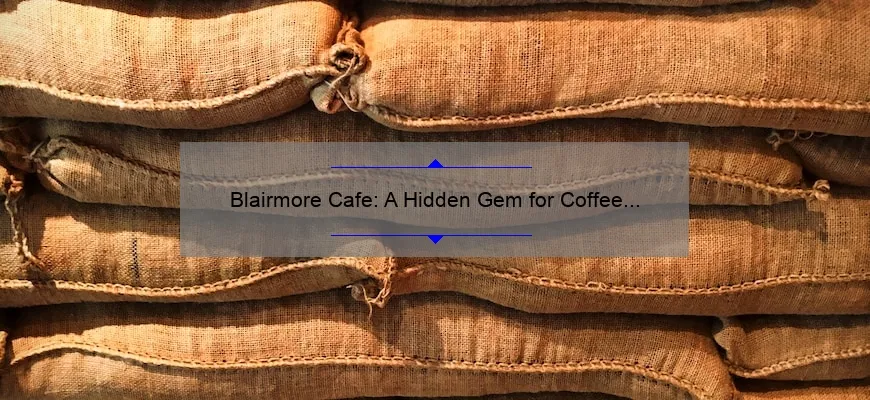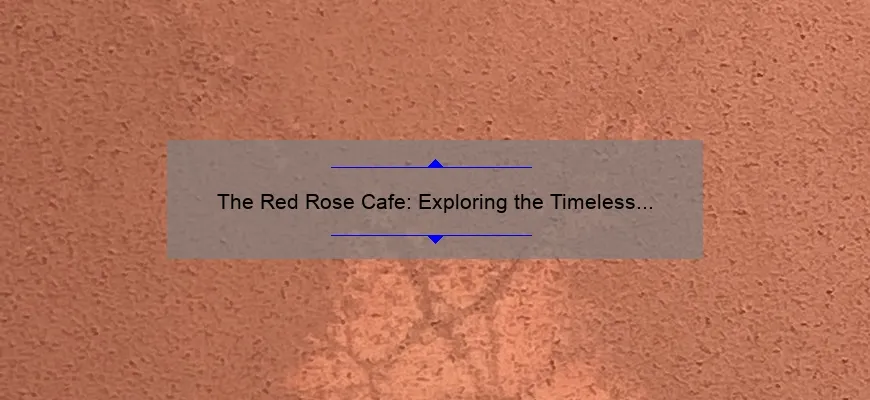- Short answer penguin cafe orchestra music for a found harmonium:
- 1) Introduction to Penguin Cafe Orchestra’s Music for a Found Harmonium
- 2) Exploring the Origins and Story Behind Music for a Found Harmonium
- 3) Step by Step Guide: How to Play Penguin Cafe Orchestra’s Music for a Found Harmonium
- 4) Frequently Asked Questions about Penguin Cafe Orchestra’s Music for a Found Harmonium
- 5) Understanding the Unique Sounds and Composition of Music for a Found Harmonium
- 6) Expanding Your Repertoire: Other Notable Songs by Penguin Cafe Orchestra
Short answer penguin cafe orchestra music for a found harmonium:
“Music for a Found Harmonium” is a well-known composition by the Penguin Cafe Orchestra. This instrumental piece showcases the group’s unique blend of classical, folk, and minimalist music styles. It gained popularity after being featured in various films and TV shows, solidifying its place as one of PCO’s most recognizable songs.
1) Introduction to Penguin Cafe Orchestra’s Music for a Found Harmonium
Introduction to Penguin Cafe Orchestra’s “Music for a Found Harmonium”
The music world is filled with hidden gems that are waiting to be discovered. One such gem is the Penguin Cafe Orchestra’s “Music for a Found Harmonium.” This mesmerizing piece of art, composed by Simon Jeffes, captivates listeners with its unique blend of classical, folk, and minimalist elements.
Intriguingly titled “Music for a Found Harmonium,” this composition takes its name from the instrument that serves as its centerpiece – the harmonium. A found harmonium refers to an instrument that has been stumbled upon or acquired through chance encounters rather than being intentionally sought out. The concept behind this adds an air of whimsical charm to the music, as though it was destined to be created and brought into existence through serendipity.
As the melody starts playing, one can’t help but be transported into an enchanting soundscape filled with delightful surprises at every turn. The Penguin Cafe Orchestra masterfully weaves together various musical motifs and rhythmic patterns. Their skillful use of multiple instruments brings depth and texture to the composition, providing an immersive listening experience.
One aspect that sets “Music for a Found Harmonium” apart is its seamless fusion of genres. Elements of classical music intermingle effortlessly with folk-inspired melodies, creating a harmonious blend that feels both nostalgic and fresh. Just when you think you have uncovered all there is within the piece, unexpected minimalist influences peek through and urge you to pay closer attention.
The beauty lies in how effortlessly accessible this song remains while delivering moments of pure brilliance. It showcases the orchestra’s aptitude in crafting melodies that resonate with both casual listeners and seasoned musicians alike. You don’t need a degree in music theory to appreciate its appeal; just let yourself get carried away by its melodic waves.
Furthermore, what truly makes “Music for a Found Harmonium” stand out is the emotional depth it exudes. Its interplay of varying tempos and dynamics evokes a sense of nostalgia, whimsy, and even a touch of melancholy. As the harmonium plays its soulful tune, you’ll find yourself swept away to a time when life was simpler or perhaps longing for the simplicity lost in our modern age.
Truly, “Music for a Found Harmonium” is a testament to how music can transcend boundaries and evoke emotions that words alone cannot express. It serves as an invitation to embrace the unexpected, to find beauty in chance encounters, just as the Penguin Cafe Orchestra stumbled upon their enchanting harmonium.
So, if you’re looking for a musical masterpiece that defies categorization and takes you on an unforgettable sonic journey, look no further than Penguin Cafe Orchestra’s “Music for a Found Harmonium.” With its blend of elegance, playfulness, and thought-provoking charm, it will leave you yearning for more from this remarkable ensemble.
2) Exploring the Origins and Story Behind Music for a Found Harmonium
Title: Embarking on a Mesmerizing Journey: Unraveling the Origins and Enigmatic Story Behind “Music for a Found Harmonium”
Introduction:
In the vast landscape of music, certain tunes tend to captivate us with their mysterious origins and intriguing stories. One such masterpiece that has enthralled listeners for decades is “Music for a Found Harmonium.” This enchanting composition weaves together elements of curiosity, serendipity, and musical brilliance into its very fabric. Join us as we embark on an exhilarating journey, exploring the origins and delving deep into the enigmatic story behind this timeless musical gem.
The Unexpected Encounter:
Imagine strolling through the bustling streets or idly wandering in an old flea market when suddenly your eyes are caught by something unusual. A harmonium, discarded amidst forgotten treasures but brimming with potential and hidden melodies waiting to be discovered. Such was the fortuitous encounter that led to the inception of “Music for a Found Harmonium.”
Simon Jeffes: The Creative Genius:
At the core of this captivating piece lies the ingenious mind of Simon Jeffes—a visionary composer hailed for his unique approach to merging diverse musical elements. As founder of the Penguin Cafe Orchestra, an avant-garde collective renowned for defying conventional genres, Jeffes possessed an exceptional ability to infuse experimental tendencies into his compositions.
The Creation Process:
Jeffes’s discovery of the abandoned harmonium acted as a catalyst for inspiration. He immediately grasped its soulful resonance and embarked on crafting a remarkable piece that could breathe life into its dormant potential. Drawing upon influences from classical music, minimalism, folk, and even his childhood memories, Jeffes merged these experiences with his innate creative sensibilities to give birth to “Music for a Found Harmonium.”
A Tribute to Simpler Times:
As we delve deeper into this evocative creation, it becomes evident that beneath its melodic tapestry lies a yearning for nostalgia and simplicity—an ode to days gone by. Jeffes himself described it as a reaction to the fast-paced, technology-driven modern world, a way of celebrating the beauty found in the uncomplicated joy of childhood memories and cherished moments.
Evoking Imagery:
One cannot help but be transported into vivid landscapes while listening to “Music for a Found Harmonium.” The whimsical melodies dance delicately like dandelion seeds caught in the wind, each note painting images of vibrant spring meadows or intimate gatherings with loved ones. Its unique ability to evoke emotions through sound alone is truly remarkable.
Enduring Legacy:
Decades have passed since “Music for a Found Harmonium” first graced our ears, yet its allure remains unwavering. Countless reinterpretations and arrangements across various musical genres stand as testaments to its timelessness. From film scores to live performances, this enchanting composition has weaved itself into the fabric of contemporary music history.
Conclusion:
As we conclude our enthralling journey into the origins and enigmatic story behind “Music for a Found Harmonium,” it becomes clear that this remarkable composition transcends both time and space. Simon Jeffes’s masterful amalgamation of serendipitous discoveries, personal memories, and creative brilliance birthed an enduring melody that continues to captivate hearts around the globe. So next time you stumble upon an unexpected treasure amidst life’s chaos, remember that even in forgotten harmonies lie melodies waiting to be unearthed—a reminder that beauty thrives where least expected.
3) Step by Step Guide: How to Play Penguin Cafe Orchestra’s Music for a Found Harmonium
Title: Master the Melodies: A Step-by-Step Guide to Captivating Audiences with Penguin Cafe Orchestra’s Music for a Found Harmonium
Introduction:
If you’re someone who appreciates eclectic and enchanting melodies, then diving into the world of Penguin Cafe Orchestra’s “Music for a Found Harmonium” is an experience worth savoring. This timeless composition combines whimsical harmonies and beautiful arrangements, showcasing the true essence of musical artistry. In this step-by-step guide, we will unravel the secrets behind playing this mesmerizing piece on your very own found harmonium, so get ready to captivate audiences with your skills as we take you on a delightful melodic journey.
Step 1: Unraveling the Enchantment
Before we delve into playing “Music for a Found Harmonium,” it is essential to understand the magic behind this masterpiece. Composed by Simon Jeffes, this instrumental gem embraces classical elements while incorporating folk and minimalist sensibilities. Familiarize yourself with diverse versions and interpretations to grasp the nuances that make each rendition unique.
Step 2: Embrace Your Instrument
To fully immerse yourself in recreating Penguin Cafe Orchestra’s harmonic brilliance, choosing a suitable found harmonium is vital. Unlike traditional harmoniums that require air bellows or direct electricity supply, found harmoniums use sustain pedals or electronic alternatives. Select an instrument that resonates well and speaks effortlessly through its warm tones.
Step 3: Understanding Melody and Progressions
The key to mastering any composition lies in comprehending its melodic structure and chord progressions—an art form embedded within Jeffes’ creation. Begin by identifying how melody evolves throughout the piece while noting modulations and variations employed by different performers. Gain proficiency in understanding intervals, scales, inversions, arpeggios, cadences—essential tools in decoding music’s enigmatic language.
Step 4: Clarity through Practice
Reaching a level of proficiency necessitates practice, perseverance, and patience. Break down the composition into sections, starting with simpler melodies and gradually progressing to more complex segments. Devote dedicated practice sessions to tackle challenging portions, ensuring a seamless flow between phrases and maintaining the piece’s lively rhythm.
Step 5: Infuse Individuality
While accurate replication is essential, adding your personal touch elevates the performance by infusing it with your musical identity. Experiment with dynamics, timing, tempo variations, and nuances to express your interpretation of this iconic piece within its overarching framework. This harmonious blend of adherence and individuality will make each rendition distinctly yours.
Step 6: Communicating Emotionally
In order for this cherished melody to truly resonate with listeners, the performer must convey emotion authentically. Pay heed to the music’s ebb and flow—adjusting tempo to underscore contrasting sections or emphasizing particular phrases subtly. Ensure a symbiotic connection between composer intent and your own understanding by presenting this heartwarming composition emotionally.
Step 7: Performance Preparation
Every captivating performance requires meticulous preparation. Prioritize memorization for easier engagement with fellow musicians or audience eye contact during live renditions. Consider exploring alternate arrangements or collaborations with other instrumentalists for a fresh twist on Penguin Cafe Orchestra’s beloved creation—extending its already far-reaching appeal.
Conclusion:
Unlocking the mesmerizing allure of Penguin Cafe Orchestra’s “Music for a Found Harmonium” can be an incredibly rewarding journey when approached step-by-step with passion and dedication. Unleash your inner artist by embracing every intricacy within this masterpiece—from understanding melodic subtleties to perfecting performance nuances that transcend mere notes on paper. With diligent practice fortified by creative flair, you’ll breathe new life into Jeffes’ enchanting composition while establishing yourself as an accomplished performer in the realm of found harmonium mastery.
4) Frequently Asked Questions about Penguin Cafe Orchestra’s Music for a Found Harmonium
Frequently Asked Questions about Penguin Cafe Orchestra’s Music for a Found Harmonium
1) What is the story behind Music for a Found Harmonium?
Music for a Found Harmonium is an iconic instrumental piece composed by Simon Jeffes, the mastermind behind the innovative Penguin Cafe Orchestra. The composition itself was inspired by a unique instrument called the harmonium, which Jeffes stumbled upon in India during his travels. This particular harmonium was found abandoned on a street corner and immediately caught Jeffes’ attention due to its mysterious aura and rich timbre.
Drawing upon the magic sparked by this discovery, Jeffes meticulously crafted an enchanting melody around this extraordinary instrument—giving birth to Music for a Found Harmonium. The piece blends elements of folk, chamber music, and experimental sounds seamlessly, creating an ethereal sonic experience that transcends musical boundaries.
2) What makes Music for a Found Harmonium so special?
What sets Music for a Found Harmonium apart from other compositions is its ability to evoke emotions that words often fail to express. The delicate interplay between the harmonium and other instruments within the orchestra creates a sense of whimsical nostalgia combined with profound sentimentality. It conjures up images of forgotten memories and distant landscapes, blending melancholy with hope in perfect harmony.
Moreover, this piece showcases Simon Jeffes’ genius as both a composer and an arranger. Though simplistic in nature, it contains intricate layers that build upon each other seamlessly—a testament to Jeffes’ meticulous attention to detail. This subtle complexity allows listeners to discover new nuances with each subsequent listen, rendering Music for a Found Harmonium endlessly captivating.
3) How did Music for a Found Harmonium become so popular?
Originally released in 1984 as part of Penguin Cafe Orchestra’s album “Broadcasting from Home,” Music for a Found Harmonium gained immense popularity through its unexpected journey across different mediums and genres. Its unique sound attracted filmmakers who recognized its ability to enhance visual narratives.
One of the most influential moments in popularizing this piece was when it featured prominently in the closing credits of the critically acclaimed film “Napoleon Dynamite” (2004). The combination of the iconic harmonium melody with the quirky and endearing nature of the movie elevated Music for a Found Harmonium to newfound heights, captivating audiences worldwide. Since then, it has become a recognizable and beloved tune, forever intertwined with both popular culture and art-house sensibilities.
4) How does Music for a Found Harmonium resonate with different demographics?
Music is often considered a universal language, capable of transcending cultural and generational barriers. In that regard, Music for a Found Harmonium exudes an innate universality that enables it to strike a chord with people from all walks of life. Its simplicity avoids any specific genre associations, making it accessible to fans of various musical genres and age groups.
For older listeners, this composition might stir nostalgic feelings—reminding them of simpler times or invoking memories long forgotten. Younger generations are drawn to its charming acoustic melodies and timelessness—a welcome respite from overproduced music dominating mainstream channels today. It also appeals to classical music aficionados due to its intricate composition and chamber music-inspired elements.
Ultimately, Music for a Found Harmonium offers an intensely personal experience where listeners can find solace, inspiration, or simply lose themselves in its melodic embrace. Its allure lies not only in Simon Jeffes’ ingenious composition but also in its ability to touch hearts across generations—an enduring testament to the power of music itself.
5) Understanding the Unique Sounds and Composition of Music for a Found Harmonium
Understanding the Unique Sounds and Composition of Music for a Found Harmonium
The mesmerizing tone, intricate composition, and captivating blend of sounds that emanate from a found harmonium have long intrigued musicians and music enthusiasts alike. This time-honored instrument possesses a truly distinctive quality that sets it apart from other musical instruments. In this blog post, we will delve deep into the fascinating world of a found harmonium – its unique sounds, complex composition, and the magic it creates in captivating audiences.
To truly understand the uniqueness of the sound produced by a found harmonium, one must first appreciate its rich history. Originating in Europe during the 19th century, this reed organ quickly made its way to India and became an integral part of Indian classical music. Its origin story whispers tales of adventure and serendipity as it acquired its name – ‘found’ because these organs were often discovered on ships or abandoned by European colonizers.
One might wonder what sets this harmonium apart from its cousins in the keyboard family. The answer lies in its distinct timbre – a soft yet resonant tone filled with warmth and character. This timbre is achieved through air passing over free reeds producing sound similar to that of an accordion or melodica combined with an airy quality reminiscent of a distant wind instrument.
Compositionally speaking, music written specifically for a found harmonium requires careful consideration due to its idiosyncrasies. The limited range presents both challenges and opportunities for composers. However, masterful musicians have taken advantage of this limitation to create hauntingly beautiful melodies with unexpected twists and turns.
One aspect that plays a significant role in creating melodies for found harmonium is exploring its tonal qualities within different scales and modes. The unique intonation system used in Indian classical music allows for microtonal variations not commonly found in Western musical traditions. As such, compositions tailored for this distinct instrument often venture into uncharted territories, producing sounds that can evoke an array of emotions in the listener.
Beyond the technical aspects, there is a certain magic that artists can harness when performing on a found harmonium. The instrument’s vintage allure and its rustic appearance captivate audiences before they even hear a single note. Its rhythmic bellows, delicately crafted keys stained with history, and each creak and sigh it emits seem to transport listeners to distant lands and bygone eras.
As one begins to unravel the mysteries hidden within a found harmonium, it becomes evident that this humble musical instrument holds the power to create something truly extraordinary. From its unique blend of sounds to captivating compositions specifically tailored for its limitations, the found harmonium stands as a testament to both human creativity and the ever-evolving nature of music.
So next time you encounter someone who utters those magical words – “found harmonium” – take a moment to appreciate the intricate craftsmanship behind this enchanting instrument. Embrace its idiosyncrasies, immerse yourself in its unique sound world, and let it transport you on a journey through time and emotion like no other instrument can.
6) Expanding Your Repertoire: Other Notable Songs by Penguin Cafe Orchestra
Expanding Your Repertoire: Other Notable Songs by Penguin Cafe Orchestra
The Penguin Cafe Orchestra has etched their name in the annals of music history with their unique blend of classical, folk, and minimalist influences. In our previous blog posts, we have delved into some of their most famous compositions like “Perpetuum Mobile” and “Music for a Found Harmonium.” However, this dynamic ensemble has gifted us with a plethora of other remarkable tracks that deserve recognition. In this blog post, we will take a closer look at some other notable songs by the Penguin Cafe Orchestra that should be on every music lover‘s radar.
1) “Air à Danser”
If you are looking for a whimsical tune that effortlessly transports you to a carefree and joyous state of mind, then “Air à Danser” is the perfect choice. This lighthearted composition combines catchy melodies with playful orchestration, creating an enchanting atmosphere reminiscent of a joyful dance. The intricate layers of instruments seamlessly intertwine throughout the piece, weaving together a tapestry of sound that is impossible to resist tapping your feet along to.
2) “Telephone and Rubber Band”
In an age dominated by digital communication devices, it is refreshing to go back in time and experience the quirky charm of “Telephone and Rubber Band.” This track showcases the genius creativity of the Penguin Cafe Orchestra as they incorporate everyday objects into their musical arsenal. By using a simple rubber band stretched over tin cans as an instrument alongside traditional orchestration and electronic elements, they construct a captivating composition full of surprises at every turn.
3) “Scherzo And Trio”
For those who appreciate classical compositions but yearn for something fresh and vibrant, look no further than “Scherzo And Trio.” This piece exemplifies the Penguin Cafe Orchestra’s ability to infuse classical structures with modern twists. Starting with an energetic and lively scherzo section filled with lively violins and dynamic percussions, the composition then seamlessly transitions into a serene and introspective trio section, showcasing the band’s impeccable harmonization skills. The mastery displayed in “Scherzo And Trio” is a testament to the Penguin Cafe Orchestra’s ability to fuse various genres into a cohesive musical journey.
4) “Pythagoras’ Trousers”
As the title suggests, “Pythagoras’ Trousers” takes inspiration from one of history’s greatest mathematicians, Pythagoras. This composition encapsulates the Penguin Cafe Orchestra’s knack for blending intellect with musical prowess. With its intricate melodies and ever-evolving structures, this track is like a sonic representation of mathematical equations coming to life. Each instrument seems to have its voice, participating in an imaginative dialogue that captivates listeners from start to finish.
5) “The Snake and the Lotus (The Pond)”
Prepare to be transported on a musical journey through ancient myths with “The Snake and the Lotus (The Pond).” This composition pays homage to Eastern influences with mesmerizing melodies reminiscent of traditional Chinese music. The hypnotic repetition weaves an enchanting tapestry around the listener, creating a sense of calm reflection and spirituality. Immerse yourself in this sonic oasis as you let your mind wander through mythical landscapes.
In conclusion, expanding your repertoire means exploring beyond just the well-known classics by any artist or ensemble. The Penguin Cafe Orchestra has left us with an eclectic discography that encompasses fascinating compositions like “Air à Danser,” “Telephone and Rubber Band,” “Scherzo And Trio,” “Pythagoras’ Trousers,” and “The Snake and the Lotus (The Pond).” Each song showcases their versatility, genius creativity, and ability to create unforgettable musical experiences by pushing boundaries across various genres. So go ahead, dive deeper into their catalog, discover these notable tracks for yourself, and let them expand your musical horizons even further.








